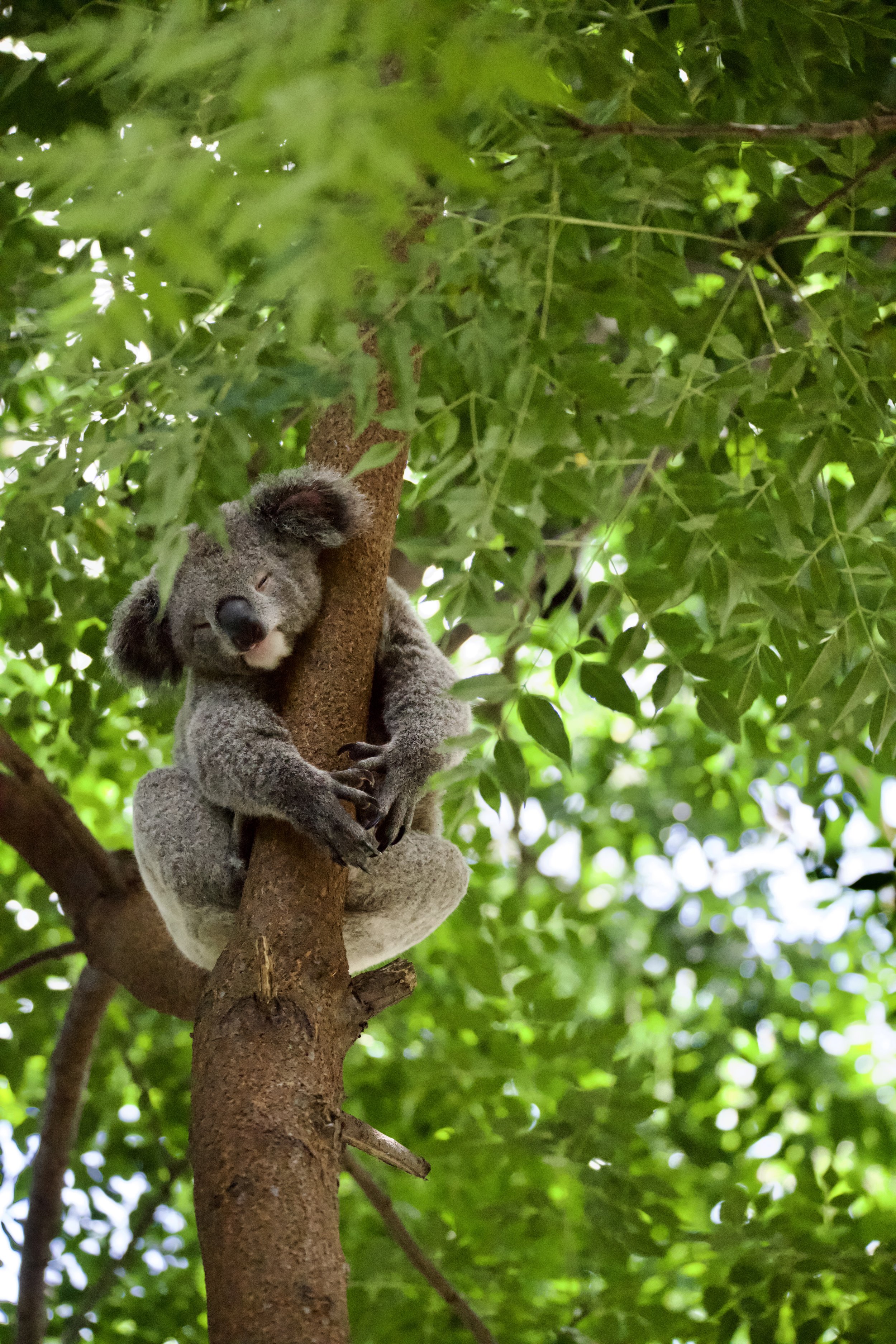
The common wombat’s hairless nose, smaller ears, rounder head, and longer fur distinguishes it from hairy-nosed species of wombats. Resembling a small bear, the common wombat has coarse, bristle-like hair ranging from sandy hues to darker browns and blacks.
Preferring wet, forested areas with slopes (for good burrow drainage), common wombats inhabit the southeastern coastal regions of Australia, including eastern New South Wales, eastern and southern Victoria, southeastern South Australia, and the whole of Tasmania.

Tree kangaroos live in lowland and mountainous rainforests in Papua New Guinea, Indonesia, and Queensland, Australia.
They have adapted to life in the trees, with shorter legs and stronger forelimbs for climbing, giving them somewhat of the appearance of a cross between a kangaroo and a lemur.
Credit: WWF Australia

A joey will stay with its mother for 6 more months after first venturing out of the pouch. In this time, the joey learns how to grasp leaves with its hands and returns to the pouch to hide or sleep. When the joey becomes too large, it may ride on its mother’s back or abdomen. At 1 year of age, the joey can live on its own.

The word koala comes from the Dharug peoples (whose traditional lands span the area from Parramatta to the Blue Mountains of New South Wales) word meaning ‘no water’.
In South East Queensland, koalas are called dumbirrbi in the Jagera language, marrambi in the Yugarabul language, borobi in the Ugambeh language, and dumbribbi in the Turrbul language.


Very excited to bring this photo to you all. Normally a very solitary animal, this day I was blessed with this opportunity.
This little fella was running around, and he emerged into his treetop spot. I pointed my camera to him and snapped this shot.
They live in areas with rainfall above 600mm in wet forests and closed eucalypt forests. They make a den in an underground burrow, cave, tree hollow, hollow log, rock crevices and even under people’s houses.
Quolls maintain a home range, with males having a larger one than females. Some will live as transients who move throughout an area instead of maintaining a permanent range.






The common wombat’s hairless nose, smaller ears, rounder head, and longer fur distinguishes it from hairy-nosed species of wombats. Resembling a small bear, the common wombat has coarse, bristle-like hair ranging from sandy hues to darker browns and blacks.
Preferring wet, forested areas with slopes (for good burrow drainage), common wombats inhabit the southeastern coastal regions of Australia, including eastern New South Wales, eastern and southern Victoria, southeastern South Australia, and the whole of Tasmania.
Tree kangaroos live in lowland and mountainous rainforests in Papua New Guinea, Indonesia, and Queensland, Australia.
They have adapted to life in the trees, with shorter legs and stronger forelimbs for climbing, giving them somewhat of the appearance of a cross between a kangaroo and a lemur.
Credit: WWF Australia
A joey will stay with its mother for 6 more months after first venturing out of the pouch. In this time, the joey learns how to grasp leaves with its hands and returns to the pouch to hide or sleep. When the joey becomes too large, it may ride on its mother’s back or abdomen. At 1 year of age, the joey can live on its own.
The word koala comes from the Dharug peoples (whose traditional lands span the area from Parramatta to the Blue Mountains of New South Wales) word meaning ‘no water’.
In South East Queensland, koalas are called dumbirrbi in the Jagera language, marrambi in the Yugarabul language, borobi in the Ugambeh language, and dumbribbi in the Turrbul language.
Very excited to bring this photo to you all. Normally a very solitary animal, this day I was blessed with this opportunity.
This little fella was running around, and he emerged into his treetop spot. I pointed my camera to him and snapped this shot.
They live in areas with rainfall above 600mm in wet forests and closed eucalypt forests. They make a den in an underground burrow, cave, tree hollow, hollow log, rock crevices and even under people’s houses.
Quolls maintain a home range, with males having a larger one than females. Some will live as transients who move throughout an area instead of maintaining a permanent range.
